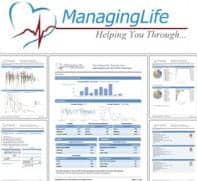New predictive models tapping the power of machine learning (ML) have been integrated into Net Health PointRight’s RADAR care management solution to identify patients at high risk for falls, pressure ulcers, mortality, and hospitalization.
Caring for complex post-acute patients and long-stay residents with multiple comorbidities is challenging for long-term and post-acute care (LTPAC) providers with limited time and staffing resources. Net Health PointRight’s post-acute solution provides easy-to-understand analytic insights that help clinicians and care managers take action to prevent adverse events within existing clinical workflows.
Part of Net Health’s PointRight analytics solutions, RADAR is a care management tool with patient-level analytics that identify risk for adverse events (falls, pressure ulcers, hospitalizations, mortality, return to SNF), levels of impairment (ADL, cognition, mood, pain), and discharge complexity.
Data and Insights in a Few Clicks
Through the new cutting-edge ML predictive models, LTPAC interdisciplinary teams can quickly identify at-risk residents and create the best-fit care plan for each patient. For example, patients with increasing pain and at high risk for falls could be given a personalized pain management plan to maintain their mobility while reducing their fall risk.
Patients at high risk for hospital readmission can be assessed more frequently with targeted attention to the factors contributing to the risk for a more individualized approach. Additionally, clinicians can have more informed conversations with patients at high risk for mortality within six months to ensure end-of-life care in accordance with their preferences.
“In a few clicks, RADAR gives providers and payers the insights needed to reduce risk for adverse events and improve clinical outcomes,” said Nadia Angelidou, Chief Statistician and Vice President of Data Science for Net Health PointRight. “Additionally, our intuitive design focuses the attention of the user on what matters most, making it easy to screen for high-risk residents, identify priorities for interdisciplinary care coordination, and make informed staffing decisions based on patient needs.”
Quality Data and Improved Predictive Performance
Quality data are paramount for improved ML model performance. RADAR predictive models were trained on Net Health’s expansive database of validated Minimum Data Set (MDS) assessments submitted by thousands of SNFs. The data have been extensively verified prior to the Centers for Medicare and Medicare (CMS) submission, analyzing each MDS assessment and checking for logical and clinical coding accuracy.
An important measurement of accuracy is discrimination, a measure of how well a predictive model can separate those who do and do not experience the event of interest (ie, rehospitalization). For example, if the estimated values for cases (ie, patients rehospitalized within 30 days) are all higher than for non-cases, it is said the model can discriminate perfectly. RADAR’s new models significantly exceed post-acute healthcare industry standards, meaning clinicians can be assured of their value for treatment decision-making.
[Source(s): Net Health Systems Inc, PR Newswire]





